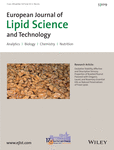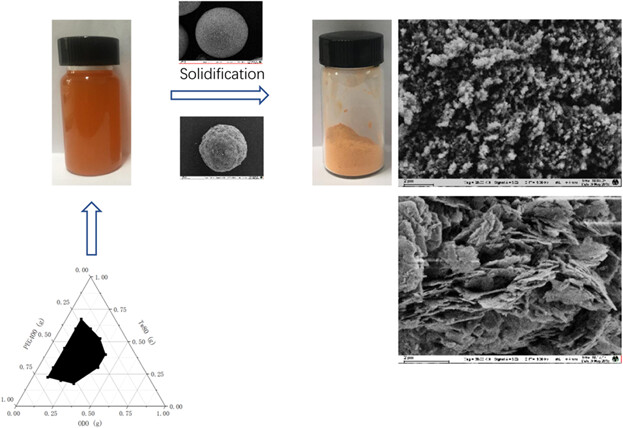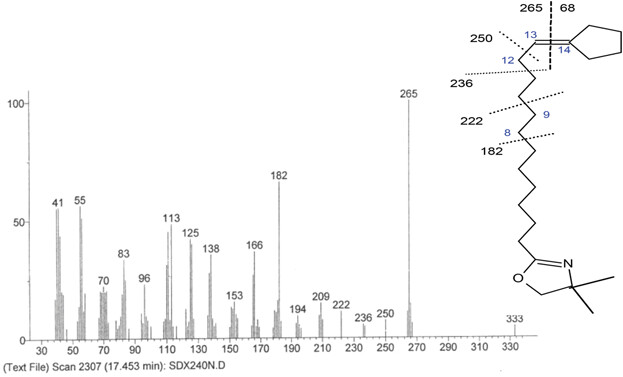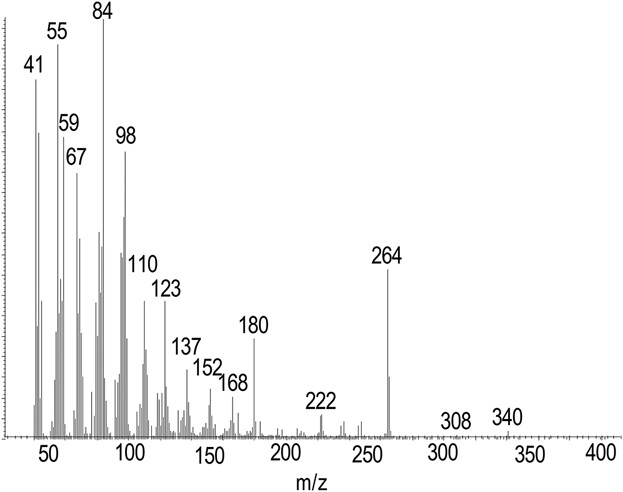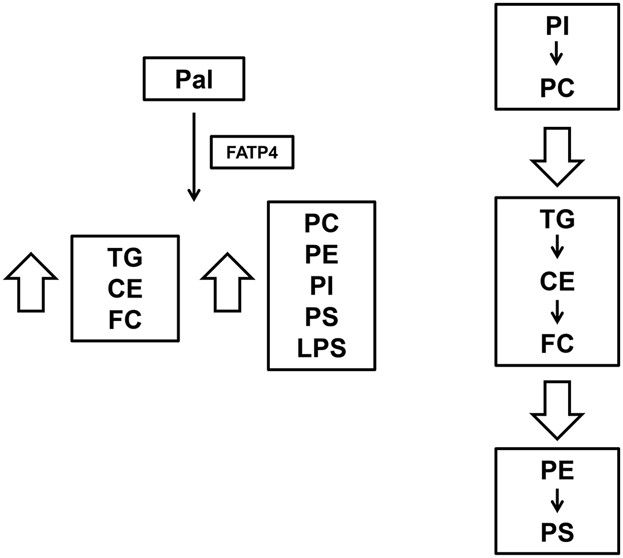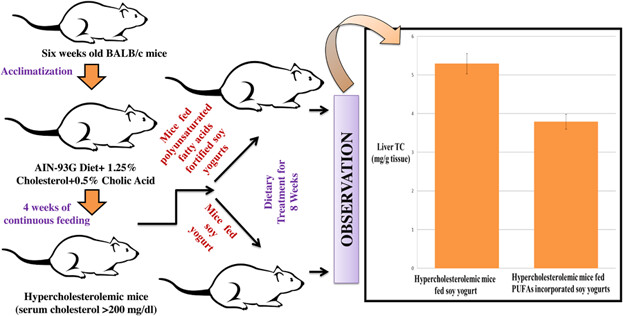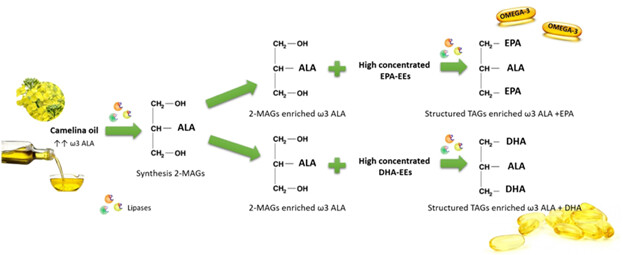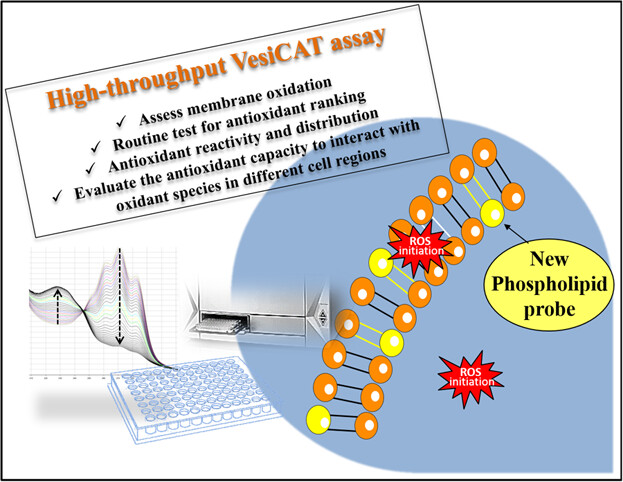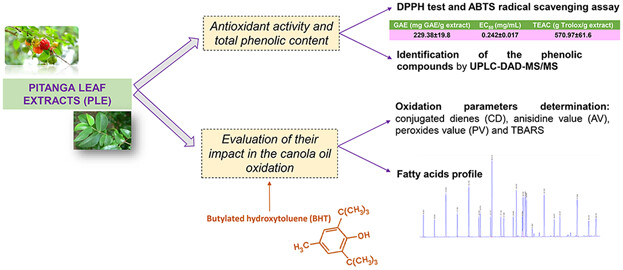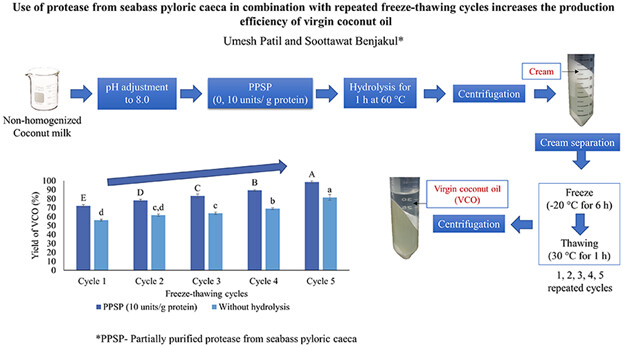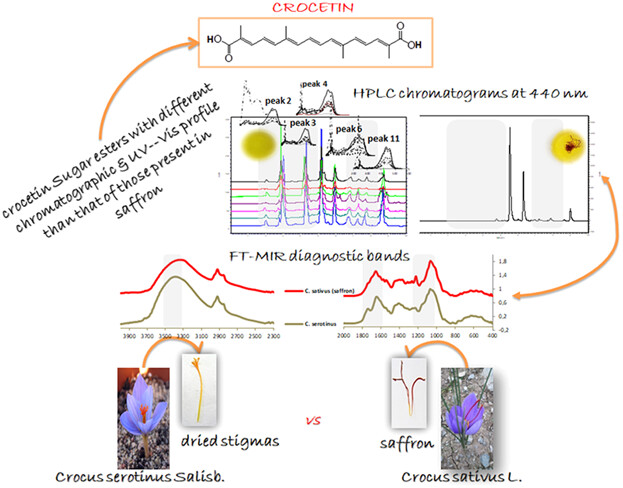Journal list menu
Export Citations
Download PDFs
Cover Picture
Cover Picture: Eur. J. Lipid Sci. Technol. 5∕2019
- First Published: 03 May 2019
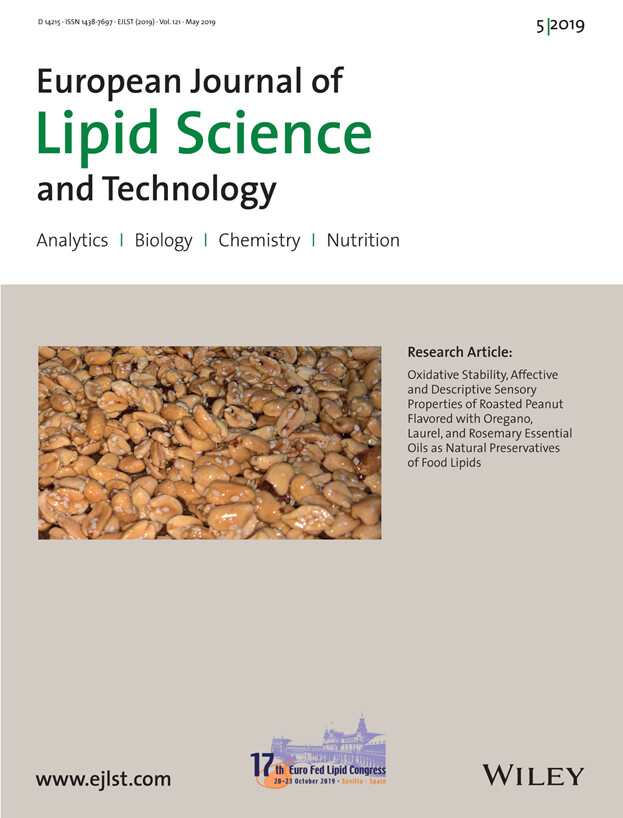
Oxidative Stability, Affective and Descriptive Sensory Properties of Roasted Peanut Flavored with Oregano, Laurel, and Rosemary Essential Oils as Natural Preservatives of Food Lipids
Rubén H. Olmedo and Nelson R. Grosso
In article number 1800428, Rubén H. Olmedo and co-workers highlight how the peanut possesses 50% of lipids which makes it susceptible to oxidation processes. The essential oils of oregano, rosemary and laurel present antioxidant activity for the protection of the lipids found in the oxidation model represented by peanuts. These essential oils prolong the shelf life of the peanuts with respect to the control sample without the addition of antioxidants.
Editorial Board
Contents
Review Articles
Rapeseed Oil
Current Research Developments on the Processing and Improvement of the Nutritional Quality of Rapeseed (Brassica napus L.)
- First Published: 25 February 2019
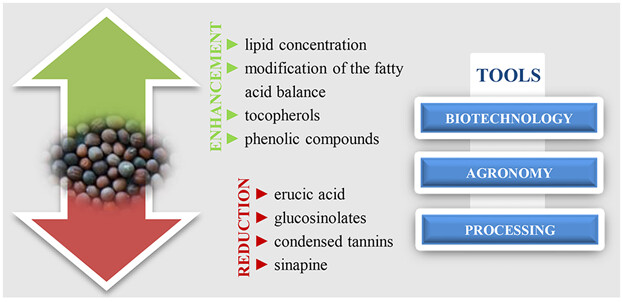
Brassica napus L., the third most important oil crop in the world after maize and oil palm, has a unique history among those crops that are targets of breeding and genetic modification. Effective tools of processing, biotechnology, and agronomy are essential to produce rapeseed oil with a high amount of bioactive compounds and continue to be employed in strengthening the product versatility.
Portuguese Olive Oils
An Overview of Portuguese Olive Oils and Table Olives with Protected Designation of Origin
- First Published: 05 February 2019
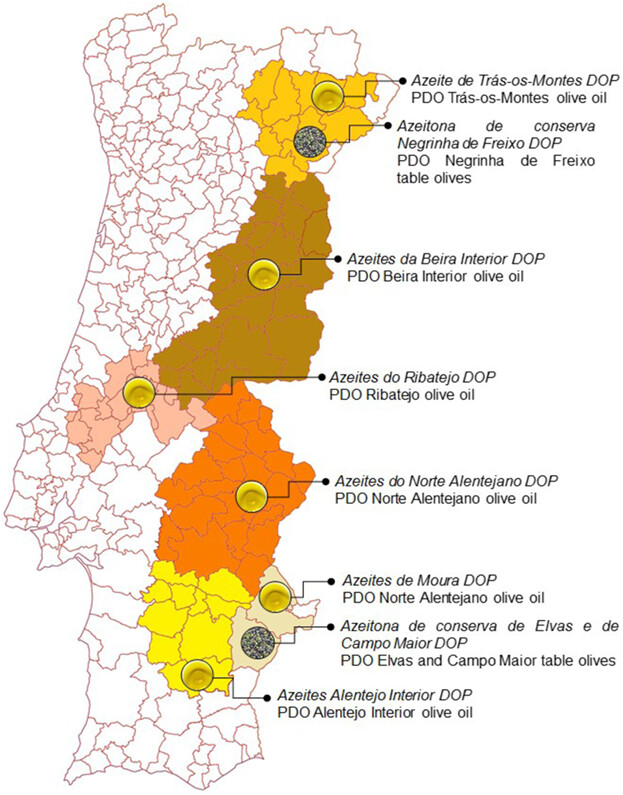
Of the table olives and olive oils already registered with Protected Designation of Origin (PDO), there are eight products belonging to the five main regions of Portugal (Trás-os Montes, Beira Litoral, Beira Interior, Ribatejo, and Alentejo). Furthermore, these PDO products are linked to the history and cultural heritage of these places, being crucial for some local producers and for consumers.
Research Articles
Roasted Peanuts
Oxidative Stability, Affective and Descriptive Sensory Properties of Roasted Peanut Flavored with Oregano, Laurel, and Rosemary Essential Oils as Natural Preservatives of Food Lipids
- First Published: 25 March 2019
Direct Transesterification
Two-Step Direct Transesterification as a Rapid Method for the Analysis of Fatty Acids in Microalgae Biomass
- First Published: 25 March 2019
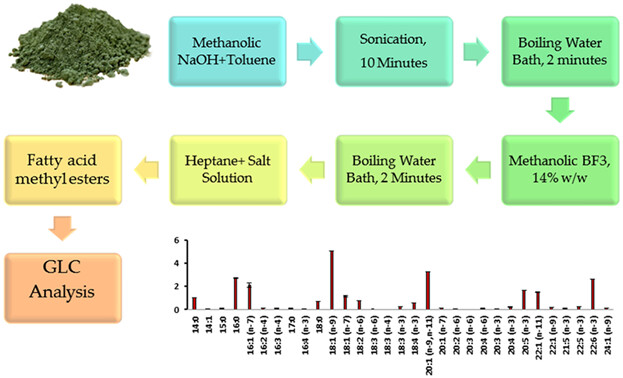
The fatty acid composition of microalgae has been proven as a potential tool for the identification of microalgal taxa. Application of fatty acid composition as a fingerprinting tool requires fast, reliable, and precise methods. A rapid and routine direct transesterification method for the evaluation of the fatty acid composition of microalgae biomass is presented in this paper. The transesterification is being done in two steps as sonication assisting base-catalyzed methanolysis followed by BF3 methylation reactions. Heating in boiling water bath for 2 min is required at both steps to improve the reactions.
Self-Emulsification
Development of a Solid Self-Emulsification Delivery System for the Oral Delivery of Astaxanthin
- First Published: 25 March 2019
Frying Oils
Rapid Measuring Flavor Quality Changes of Frying Rapeseed Oils using a Flash Gas Chromatography Electronic Nose
- First Published: 25 February 2019
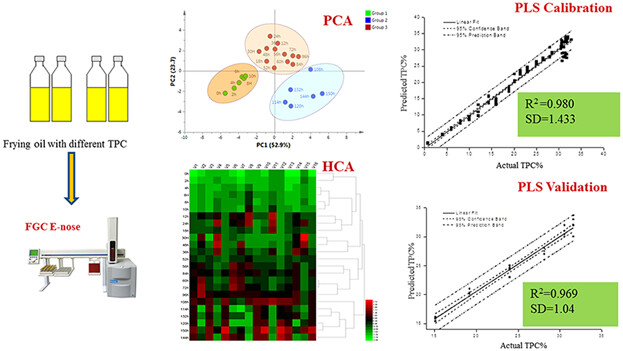
A flash gas chromatography electronic nose (FGC E-nose) is applied to measure flavor quality changes and monitor the oxidation process of rapeseed oils during frying. Partial least squares regression is applied to determine the relationship between total polar compounds and some volatile compounds determined by FGC E-nose in frying rapeseed oils.
Ultrasound Treatment
Ultrasound Technology Parameters: Effects on Phenolics in Olive Paste and Oil in Relation to Enzymatic Activity
- First Published: 27 March 2019

The effect of ultrasound technology parameters is investigated from the point of phenolic compounds by searching their relation to enzymes in Chemlali and Memecik cvs. olive paste. In addition, the effects of stone removal during extraction are also studied in terms of enzymes in Chemlali and Memecik cvs. olive paste and phenols in olive oil.
Soybean Oil
GC-MS Characterization of Cyclic Fatty Acid Monomers and Isomers of Unsaturated Fatty Acids Formed During the Soybean Oil Heating Process
- First Published: 25 March 2019
Macauba Oils
Quality Parameters of Mechanically Extracted Edible Macauba Oils (Acrocomia aculeata) for Potential Food and Alternative Industrial Feedstock Application
- First Published: 05 March 2019
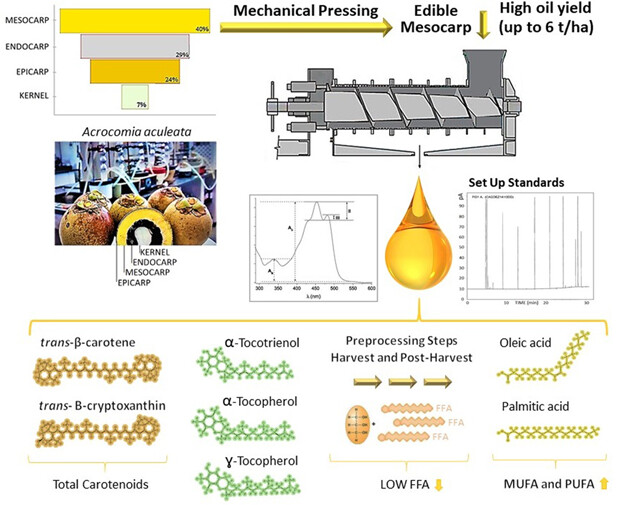
A comprehensive characterization of edible vegetable oils mechanically extracted from the mesocarp of fresh Acrocomia aculeata fruit is carried out to consider the assessment of different temperature conditions and subsequent pressings. Quality, composition, and identity characteristics of the crude oil are obtained to set up standards also on health-related topics.
Seed Oils
Composition of Some Apiaceae Seed Oils Includes Phytochemicals, and Mass Spectrometry of Fatty Acid 2-Methoxyethyl Esters
- First Published: 06 February 2019
Lipidomics
Compositional Changes Among Triglycerides and Phospholipids During FATP4 Sensitization with Palmitate Lead to ER Stress in Cultured Cells
- First Published: 25 March 2019
PUFAs Fortified Soy Yogurt
Antioxidant and Hypocholesterolemic Properties of Functional Soy Yogurts Fortified with ω-3 and ω-6 Polyunsaturated Fatty Acids in Balb/c Mice
- First Published: 19 March 2019
Camelina Oil
Strategies for Enzymatic Synthesis of Omega-3 Structured Triacylglycerols from Camelina sativa Oil Enriched in EPA and DHA
- First Published: 07 March 2019
Lipid Oxidation
Evaluation of Antioxidant Activity and Interaction with Radical Species Using the Vesicle Conjugated Autoxidizable Triene (VesiCAT) Assay
- First Published: 02 March 2019
Pomegranate Seed Oil
Punica granatum (Pomegranate) Seed Oil and Momordica charantia (Bitter Melon) Extract Affect the Lipid's Profile and Oxidative Stability of Femoral Muscles of Rats
- First Published: 02 March 2019
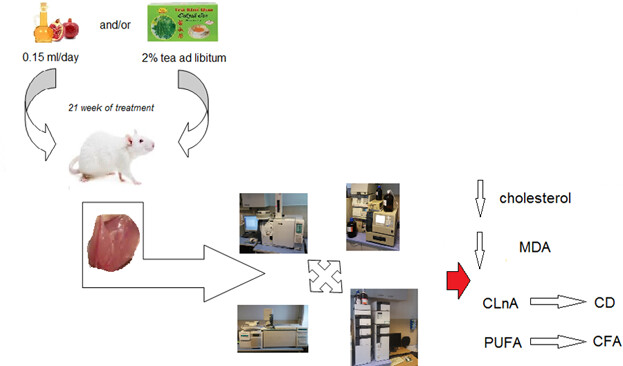
This study evaluates the influence of supplementation of rats’ diet with pomegranate seed oil separately or jointly with bitter melon extract on fatty acid, cholesterol, malondialdehyde, and tocopherols concentrations in femoral muscles. After 21 weeks of supplementation, muscles are subjected to either gas or liquid chromatographic analyses. Supplementation of diet with pomegranate seed oil decreases cholesterol and malondialdehyde contents.
Aroma Profiles
Characterization of Key Odorants in Moroccan Argan Oil by Aroma Extract Dilution Analysis
- First Published: 25 March 2019
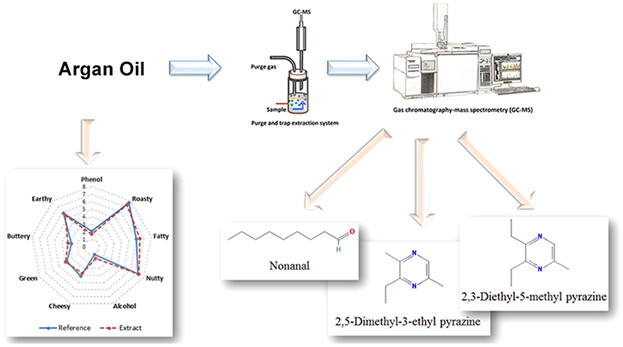
The aroma-active compounds of Moroccan argan oil are sensorily and instrumentally analyzed via gas chromatography-mass spectrometry-olfactometry (GC-MS-O). The purge and trap extraction (PTE) method is used for the extraction of volatile components. A total of 19 aroma compounds are detected as aroma active by AEDA method among 35 volatiles. Characteristic odor notes in argan oil are found to be roasty, nutty, fatty, earthy, and cheesy.
Edible Oil Oxidation
Analysis of Edible Oil Oxidation Based on Changes in the Electrical Conductivity of the Extracted Aqueous Phase
- First Published: 25 March 2019
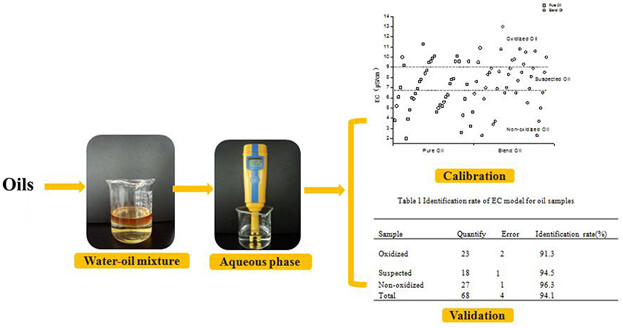
A method based on EC changes in the aqueous phase extracted from water–oil mixture is used to determine the extent of edible oil oxidation. At a water–oil (v/v) ratio of 5, the EC model can be divided into three regions: ECs of less than 6.9 µS cm−1 representing non-oxidized oils, ECs within 6.9–8.9 µS cm−1 representing suspected oils, and ECs of over 8.9 µS cm−1 representing oxidized oils. The total identification rate of the model in validation samples is 94.1%.
Antioxidants
Assessment of the Suitability of Pitanga Leaf Extract as a Natural Antioxidant for Enhancing Canola Oil Stability: Monitoring Lipid Oxidation Parameters
- First Published: 02 February 2019
Flaxseed Oil
Combination of Hydrophilic or Lipophilic Natural Compounds to Improve the Oxidative Stability of Flaxseed Oil
- First Published: 25 February 2019
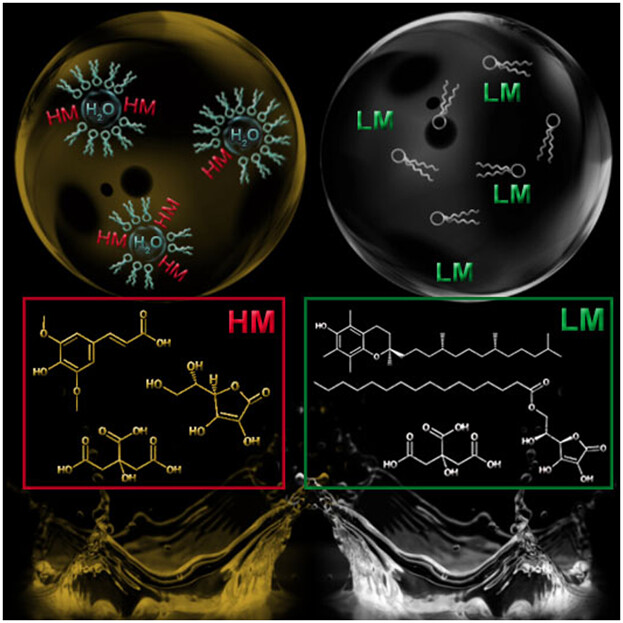
Evalution of oxidative markers under accelerated conditions in crude and stripped flaxseed oil treated with hydrophilic antioxidant mixture (HM) and lipophilic antioxidant mixture (LM), comparing the effectiveness with artificial antioxidant mixture (ART), to choose the best mixture for food industry application. It can be observed that HM improved oxidative stability in crude oil while LM improve oxidative stabilty for stripped oil. This could be explained by the presence or absence of minor componentes.
Virgin Coconut Oil
Use of Protease from Seabass Pyloric Caeca in Combination with Repeated Freeze–Thawing Cycles Increases the Production Efficiency of Virgin Coconut Oil
- First Published: 05 February 2019
Alzheimer's Disease
Comparative Analyses of DHA-Phosphatidylcholine Forage and Liposomes on Alzheimer's Disease in SAMP8 Mice
- First Published: 18 February 2019
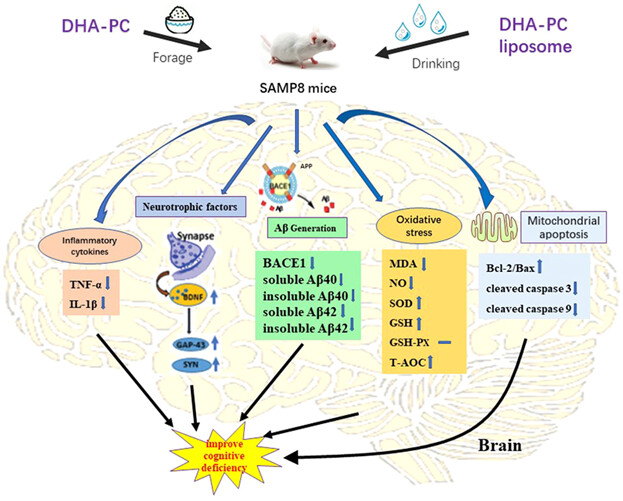
Both docosahexaenoic acid – phosphatidylcholine (DHA-PC) forage and liposome shows benefits in alleviating Alzheimer's disease development in senescence-accelerated prone 8 mice by inhibiting β-amyloid generation, oxidative stress, apoptosis, neural inflammation, and enhancing neurotrophins pathway in different degrees.
Short Communications
Postmortem Aging
Decrease in Intramuscular Levels of Phosphatidylethanolamine Bearing Arachidonic Acid During Postmortem Aging Depends on Meat Cuts and Breed
- First Published: 05 March 2019
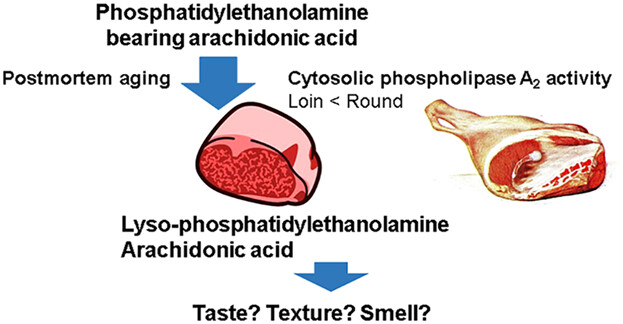
Our preliminary study investigates the changes in intramuscular phospholipid (PL) composition in beef and venison after postmortem aging. Postmortem aging decreases the phospholipid levels in meats. The 20:4n-6 is released from the meat phospholipid during postmortem aging. The two above-mentioned are considered due to hydrolyzation of the diacylglycerophospholipids in meats. The hydrolysis of phospholipid may depend on meat cuts and breed.
Crocetin
Physicochemical Characterization of Crocus serotinus Stigmas Indicates Their Potential as a Source of the Bioactive Apocarotenoid Crocetin
- First Published: 27 March 2019




